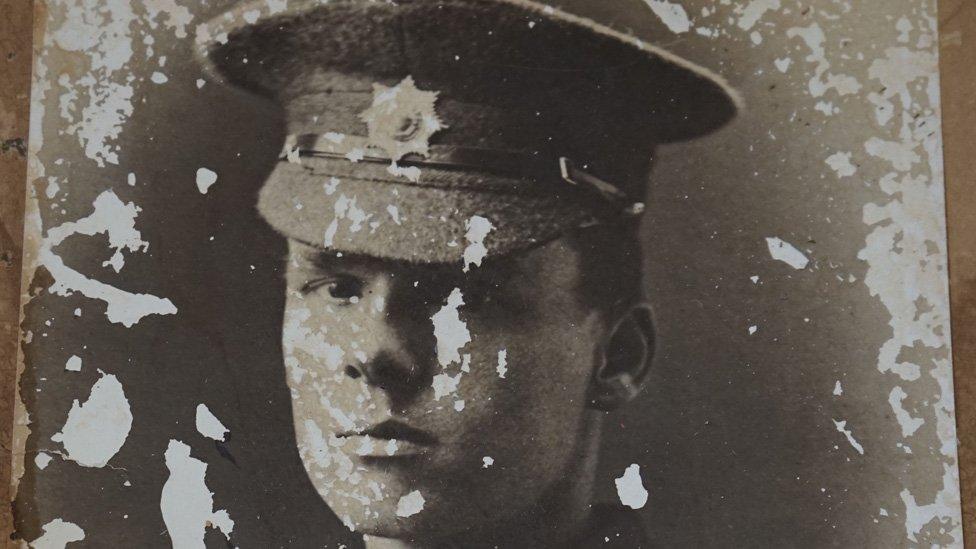Remembrance Day: Service rounds off Armistice commemorations
- Published
Flowers are laid at the grave of the Unknown Warrior and Prince Charles reads from the Gospel of John
The Queen has attended a remembrance service at Westminster Abbey for those killed and wounded in conflict, as the UK marks 100 years since Armistice Day.
Earlier, millions of people joined in a two-minute silence at 11:00 GMT that marked the end of World War One on the 11th hour of 11 November 1918.
Prince Charles laid a wreath on behalf of the Queen at the Cenotaph in London.
Ten thousand people - including veterans and relatives of WW1 soldiers - marched past the monument.
Remembrance services have been held across the country, including at Llandaff Cathedral in Cardiff, Glasgow Cathedral and St Anne's Cathedral in Belfast.
A beacon was lit at Westminster Abbey, followed by more than 1,000 others across the UK on Sunday evening.
The lights are intended to symbolise the end of the darkness of war and a return to the lightness of peace.
The Queen was joined at the Westminster Abbey service by Prince Charles, the Duchess of Cornwall and the dukes and duchesses of Cambridge and Sussex.
Prime Minister Theresa May and German President Frank-Walter Steinmeier - who earlier became the first German leader to lay a wreath at the Cenotaph - were among the 2,000-strong congregation.
The Queen laid flowers at the grave of the Unknown Warrior,, external whose body was brought from France in 1920.
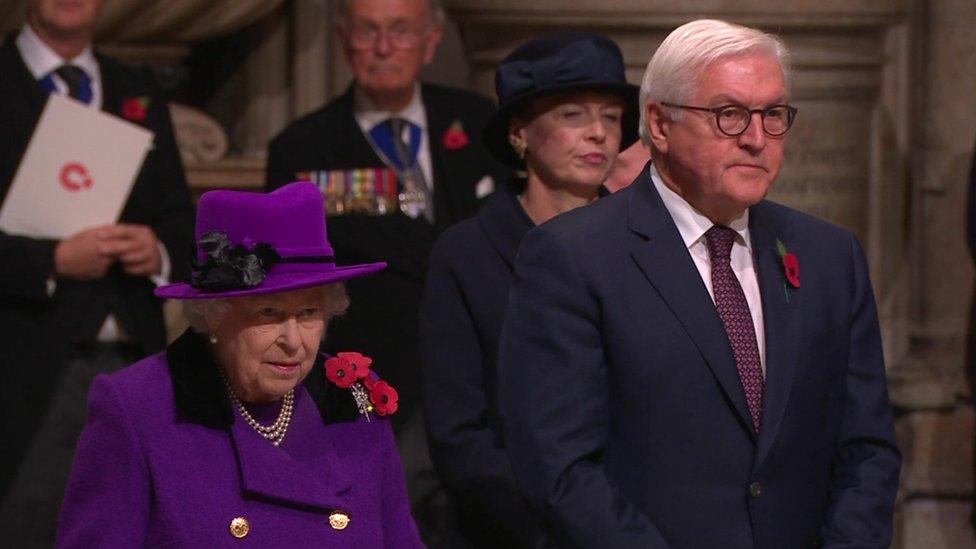
The Queen and Germany's President Frank-Walter Steinmeier
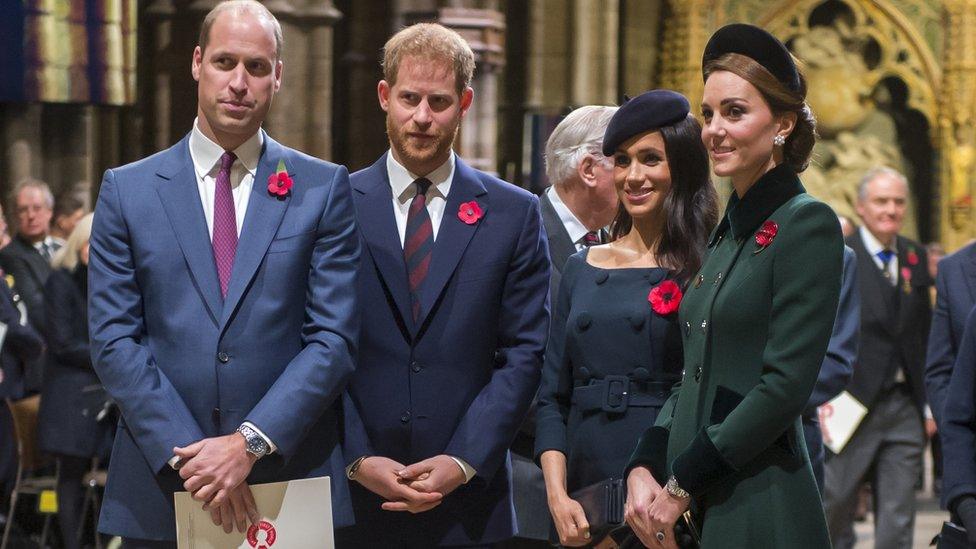
Princes William and Harry and the duchesses of Sussex and Cambridge at the Sunday evening service
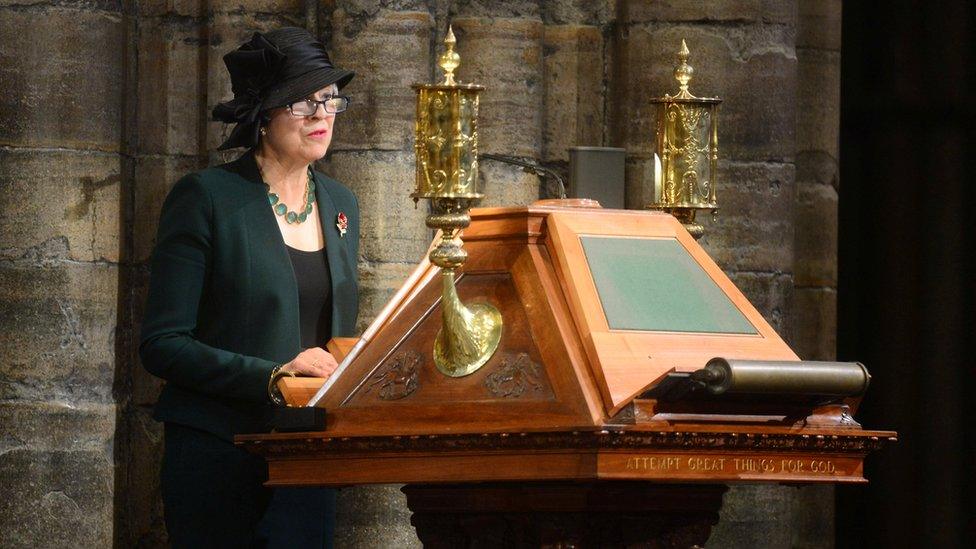
Theresa May read a passage from the Book of Isaiah
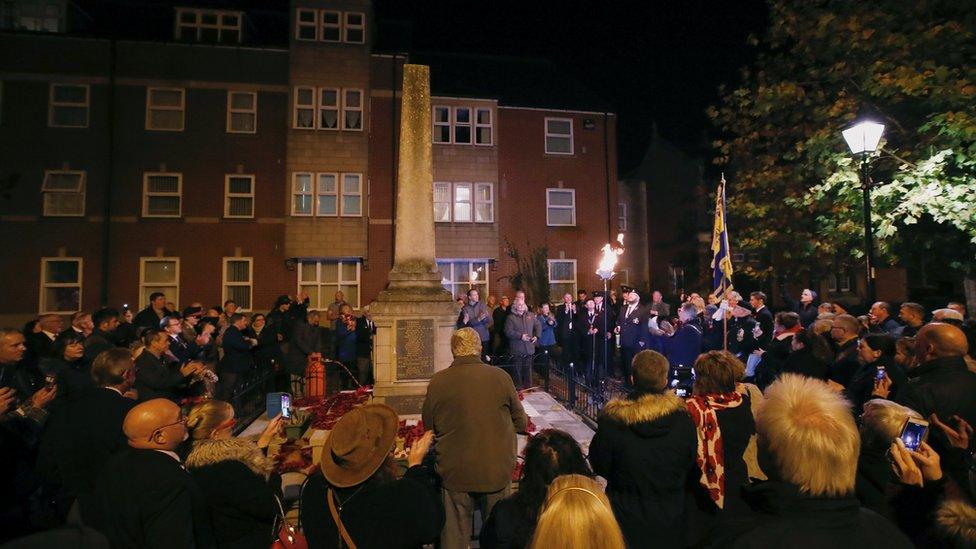
A beacon burns at Rugeley war memorial in Staffordshire - one of more than 1,000 across Britain
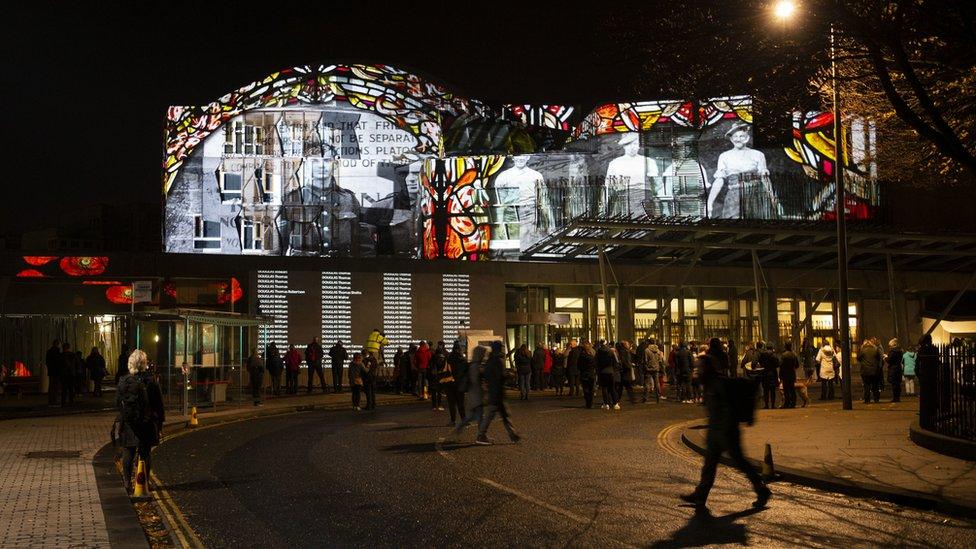
The names of people who died in World War One are projected onto the Scottish Parliament in Edinburgh
Readings were given by Mrs May, Prince Charles, actress Sophie Okonedo and actor Simon Beale.
The Dean of Westminster Dr John Hall prayed for a time when "aggression between peoples and nations is transformed into friendship and collaboration".
Earlier, the Queen observed the two-minute silence at 11:00 in Whitehall from the balcony of the nearby Foreign and Commonwealth Office. The Duke of Edinburgh was absent.
A two-minute silence is marked at the Cenotaph, after other tributes of remembrance around the UK
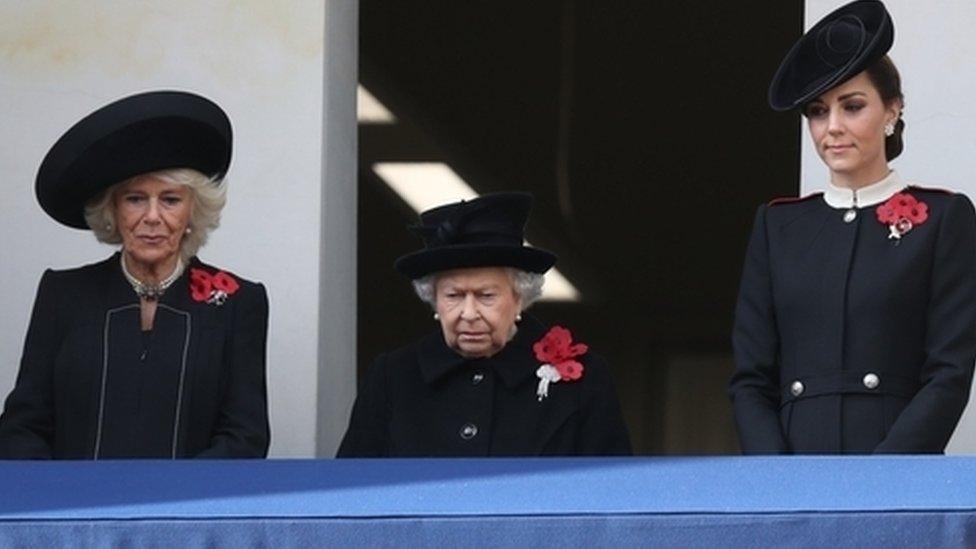
The Queen watched the service from a balcony, alongside the Duchess of Cornwall and the Duchess of Cambridge
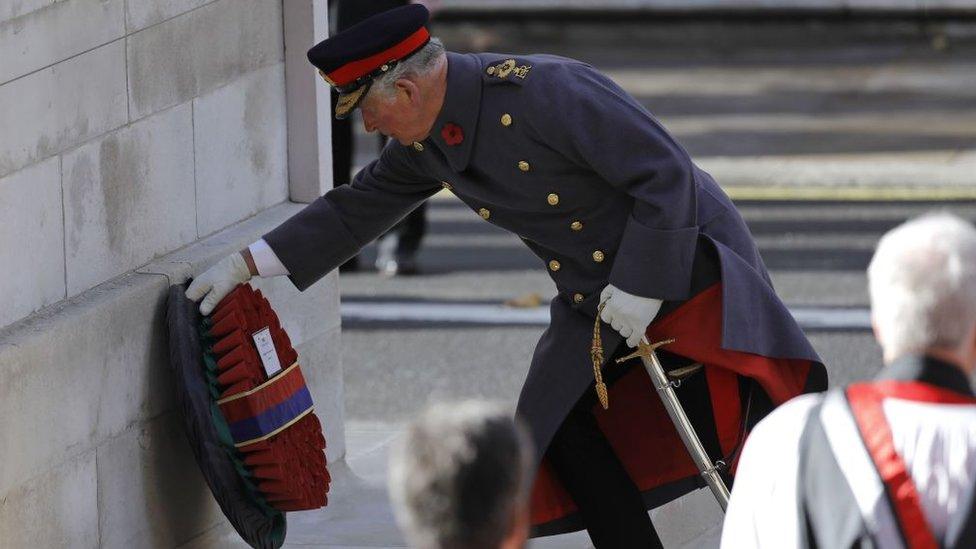
Prince Charles laid a wreath in place of the Queen
Prince Charles, the Duke of Cambridge and the Duke of Sussex, Mrs May, and Labour leader Jeremy Corbyn laid wreaths.
Big Ben's renovations were paused ahead of Armistice Day to allow the bell to chime before and after the traditional two minutes of silence.
Beach images across the UK honour World War One soldiers
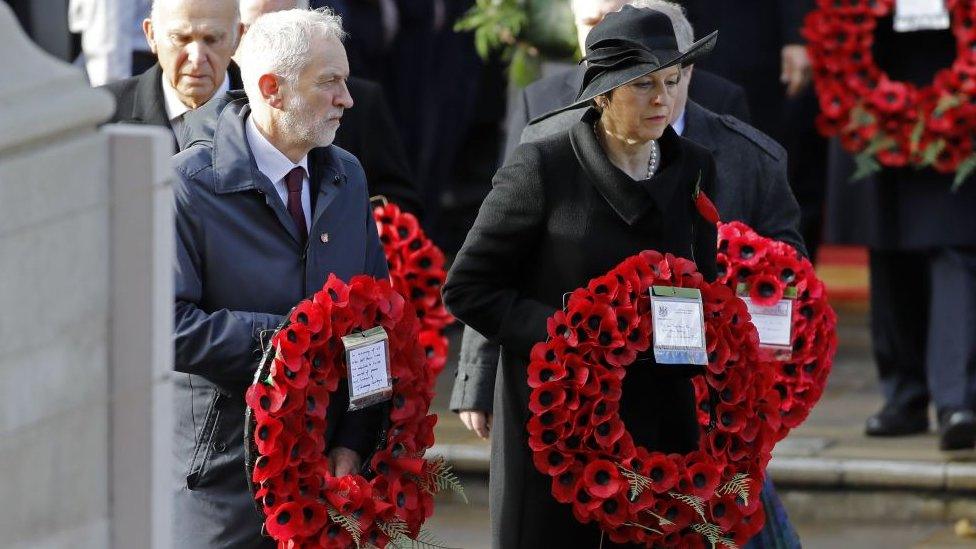
Jeremy Corbyn and Theresa May both laid wreaths
At 12:30, 10,000 members of the public - chosen by ballot - began a procession past the Cenotaph, beginning at the Mall and ending at St James's Park.
The march was described by organisers as a "nation's thank you" to all those who fought in WW1, and featured descendants of veterans from across the country.
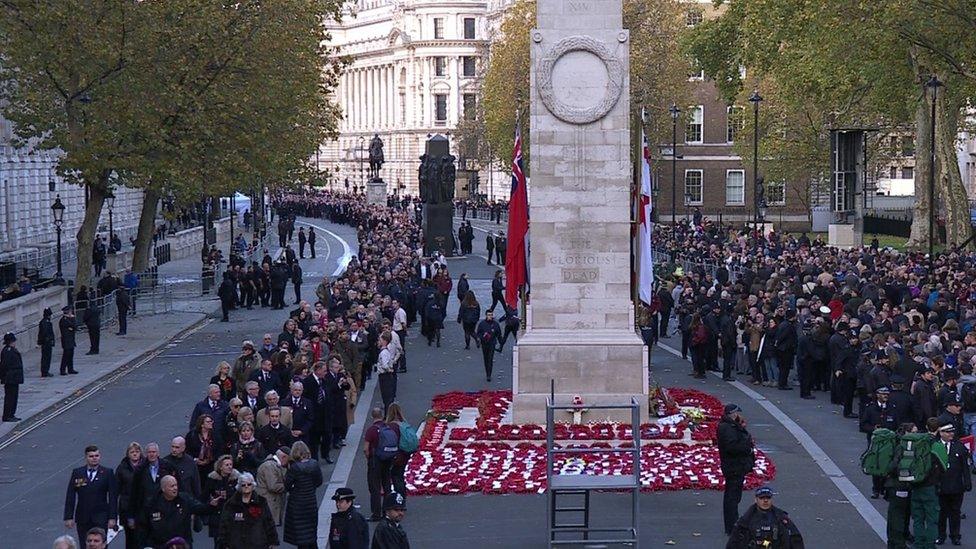
Ten thousand people marched past the Cenotaph in London
Emma Silk, 47, from Wiltshire, told the BBC she was proud and emotional to be walking in the parade.
"I want to honour the memory of my grandfather - what he did for our freedom," she said.
Her grandfather lied about his age to join the war in 1917.
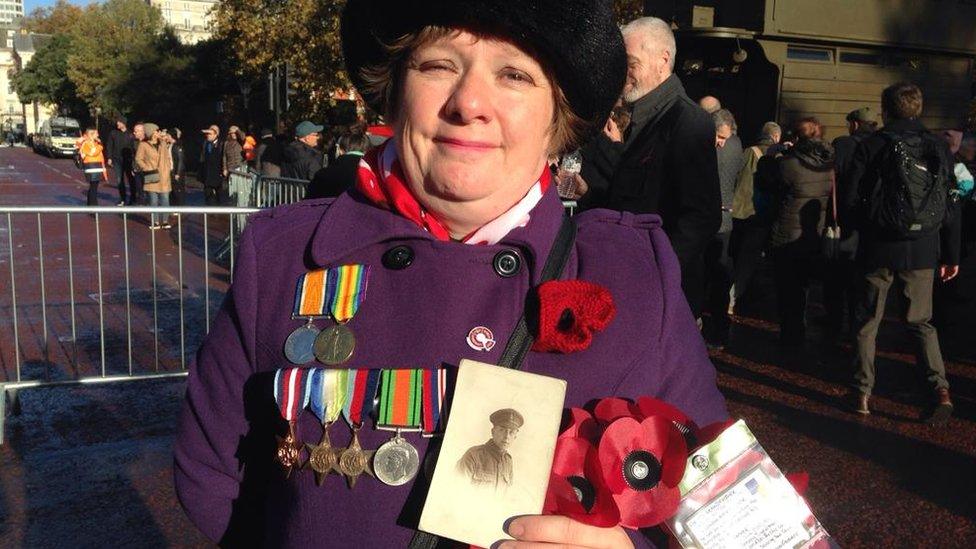
Emma Silk holds a photo of her grandfather, aged 17. "He looks so young," she says
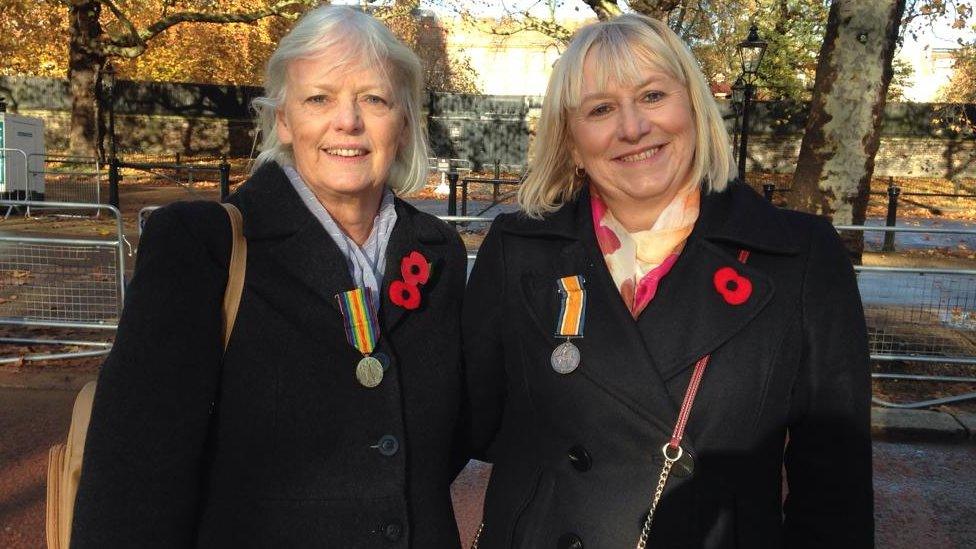
Helen Wightman and Julie Jones travelled to London for the parade
Helen Wightman, 67, from Surrey, was in London for the parade with her younger sister, Julie Jones, 53, from Wigan, to remember their grandfather, Charles Izzard.
"I've got six grandchildren and think its important that we remember if it was not for them, we would not have the freedom that we have today," Helen told the BBC.
They were wearing his medals but details of his experience are hazy. Julie did try to interview him once for a school project but he got too upset.
"So many men died, he thought he was one of the very lucky ones," she said.
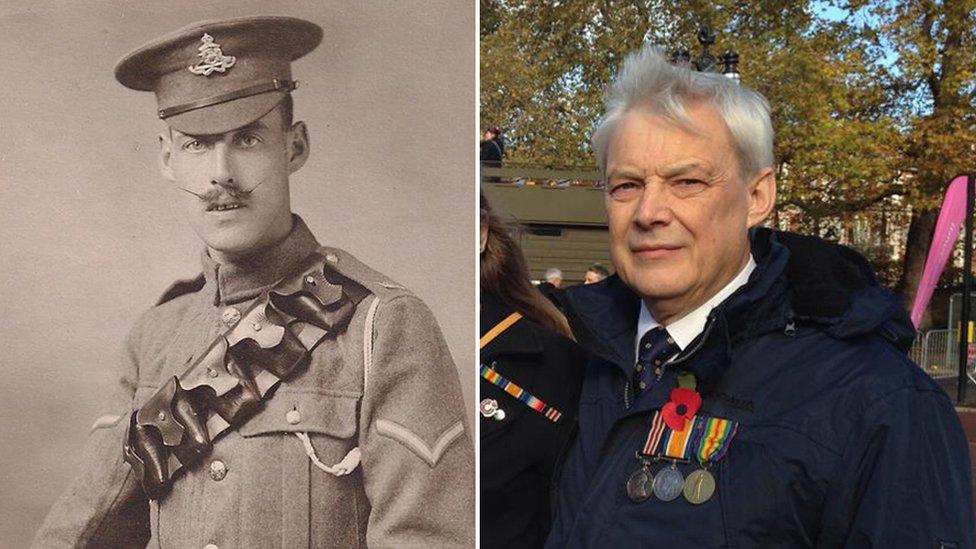
Robert Malin, whose job it was to carry away the wounded on stretchers, and his grandson Jeremy Cripps wearing his bravery medals
Jeremy Cripps, 64 and from South Shields, walked in the parade in honour of his grandfather, Robert Malin.
Mr Cripps said his grandfather went beyond the call of duty by going out under fire to rescue wounded soldiers.

At the scene
By Marie Jackson, BBC News

The Mall was packed with people proud to remember the part their families played in the war.
Dressed in the sombre, dark clothes of remembrance, many wore an ancestor's solitary medal, others row upon row, alongside their poppies.
They carried wreaths with carefully crafted messages of thanks and spoke of their pride in their grandfathers, great-grandfathers and great uncles.

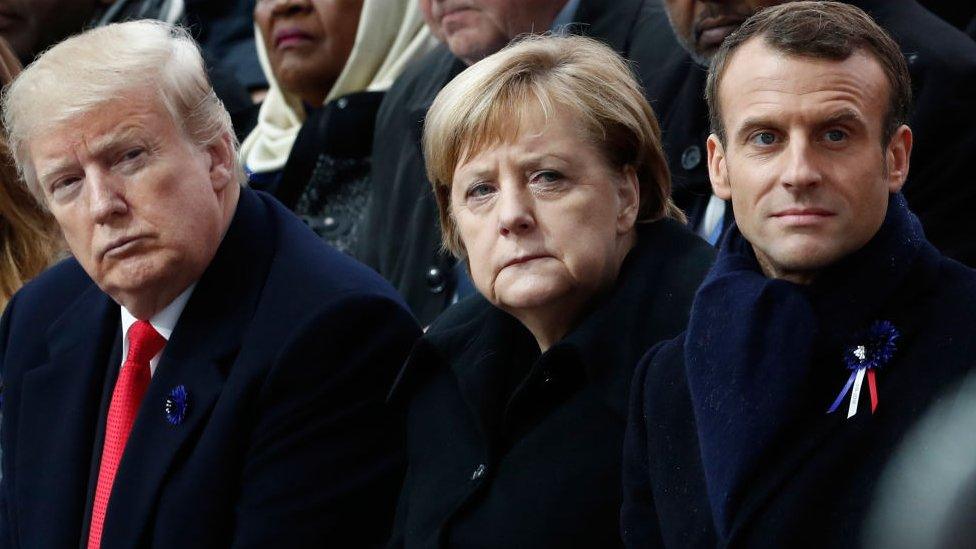
Donald Trump, Angela Merkel and Emmanuel Macron were among 70 world leaders at a service in Paris
In France, where many of the battles of the Western Front were fought, 70 world leaders gathered for a ceremony at the Arc de Triomphe in Paris, hosted by French President Emmanuel Macron.
In a speech, Mr Macron urged the assembled world leaders to come together in a joint "fight for peace".
"Let us build our hopes rather than playing our fears against each other," he said, describing patriotism as "the exact opposite of nationalism".


The Armistice 100 years on

Long read: The forgotten female soldier on the forgotten frontline
Video: War footage brought alive in colour
Interactive:, external What would you have done between 1914 and 1918?
Living history: Why 'indecent' Armistice Day parties ended

Armistice Day, 1918
Armistice Day falls each year on 11 November to mark the day in 1918 when the fighting in World War One was stopped.
The Allies and Germany signed an armistice in a railway carriage in the Forest of Compiegne in France at 05:00. Six hours later, at 11:00, the conflict ceased.
King George V announced that a two-minute silence would be observed in 1919, four days before the first anniversary of Armistice Day. The silence continues to be observed every year on the 11th hour of the 11th day of the 11th month.
- Published11 November 2018
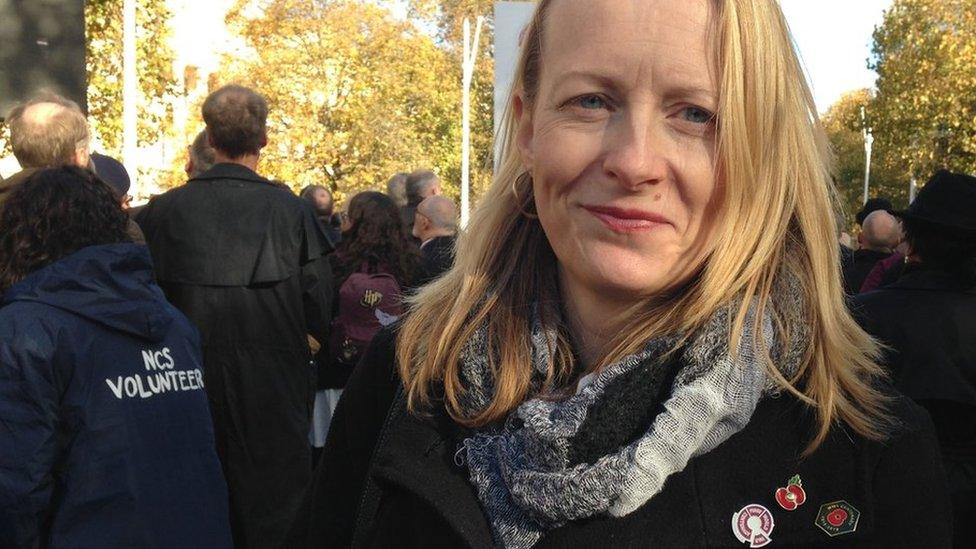
- Published9 November 2018
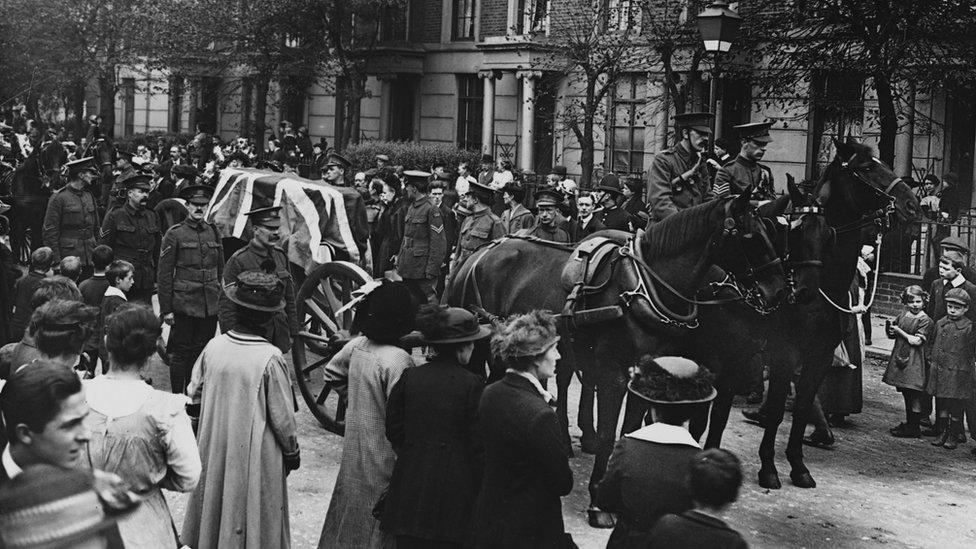
- Published8 November 2018
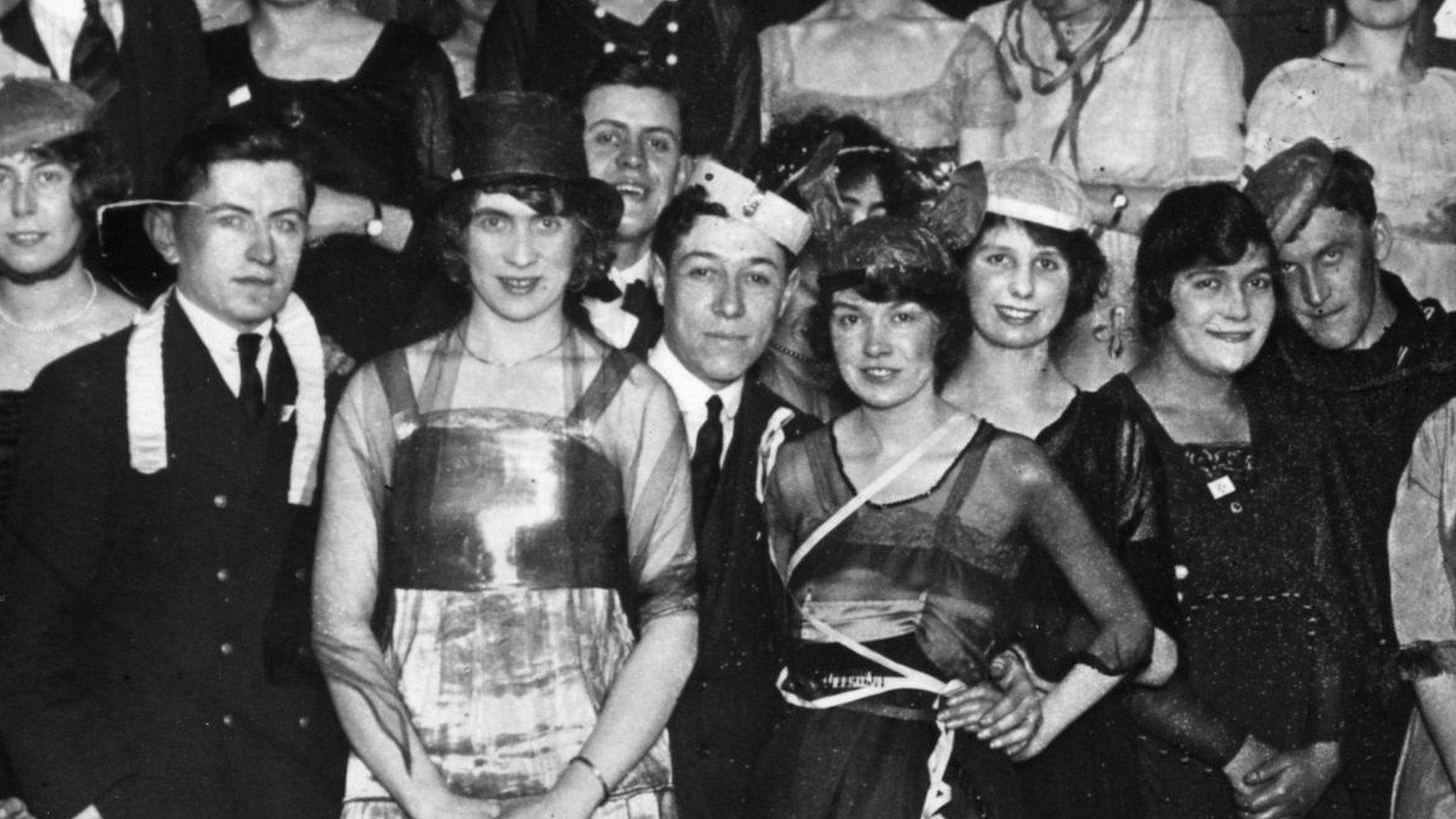
- Published9 October 2018
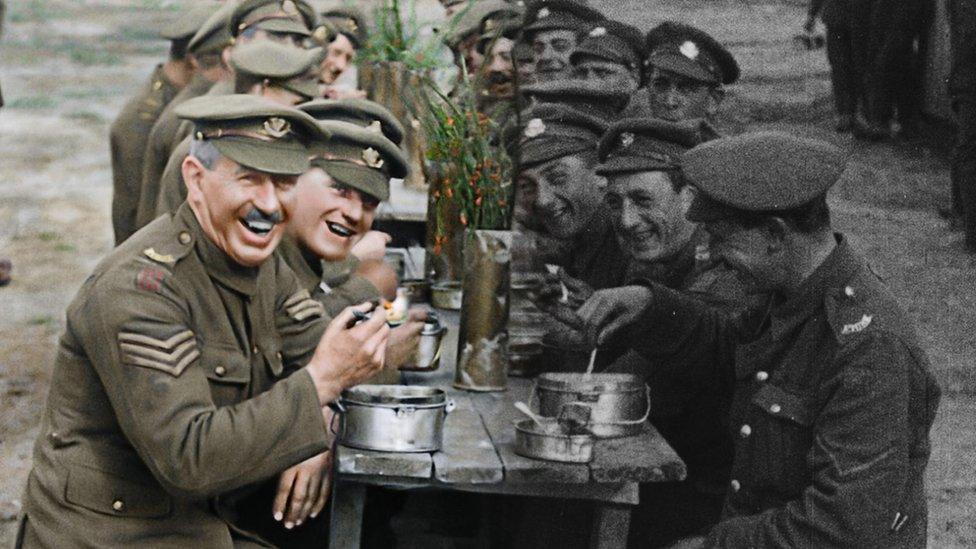
- Published25 October 2018
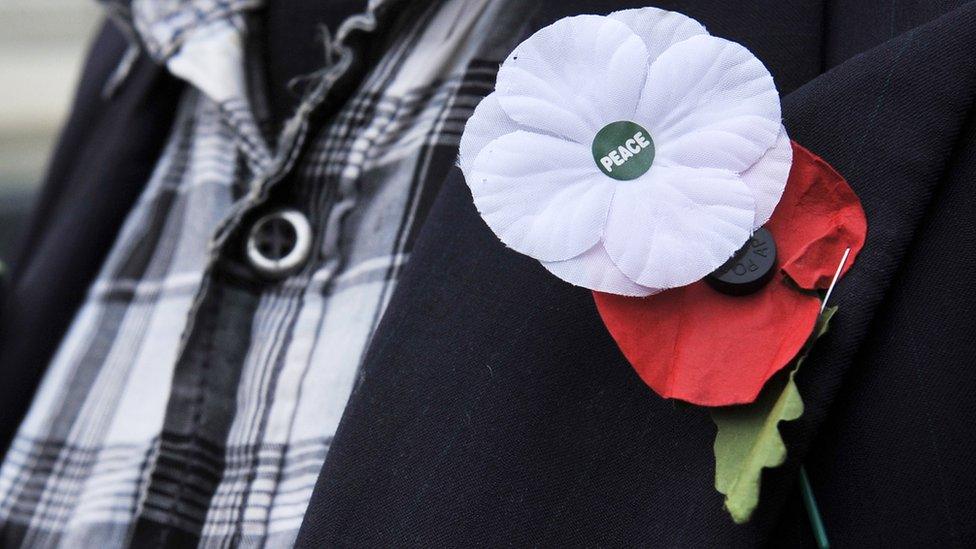
- Published10 November 2018
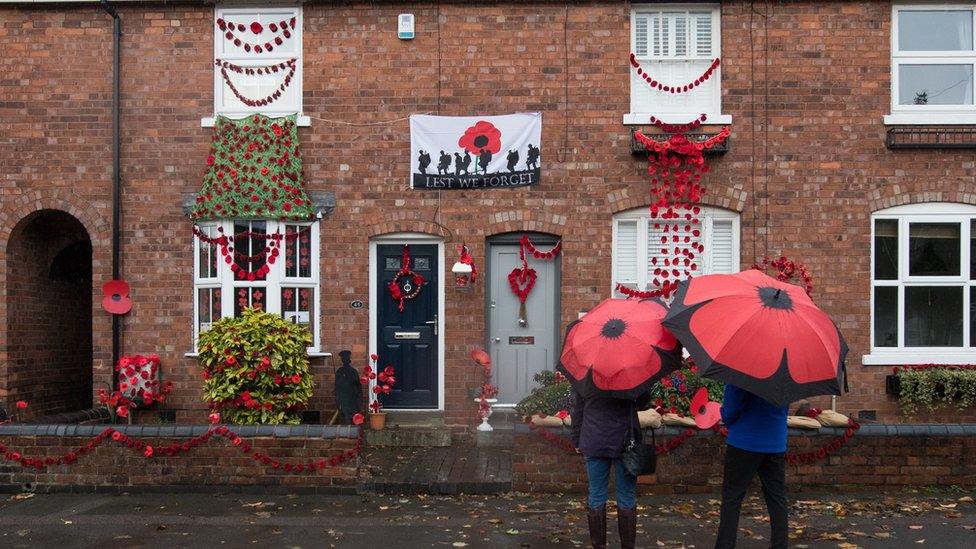
- Published9 November 2018
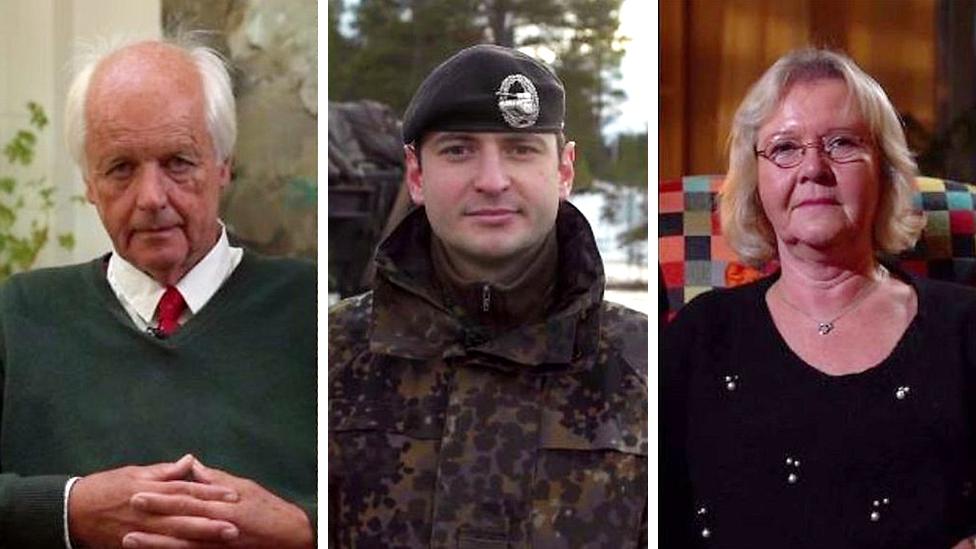
- Published9 November 2018
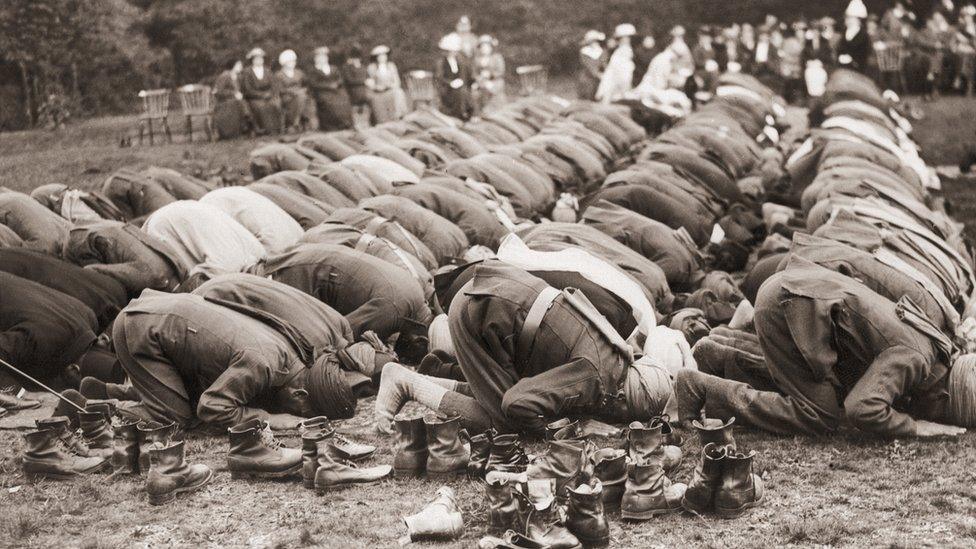
- Published5 November 2018
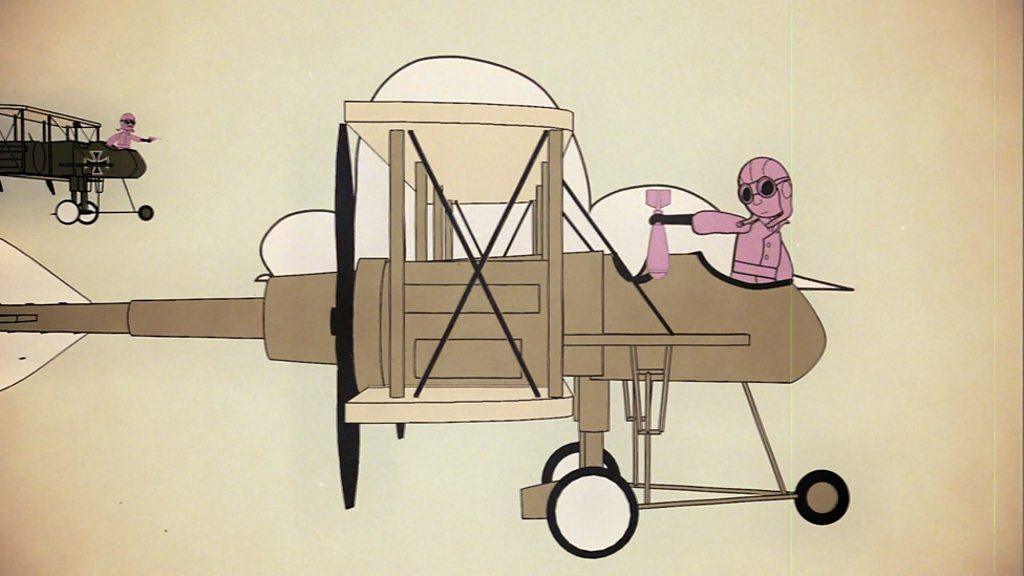
- Published7 November 2018
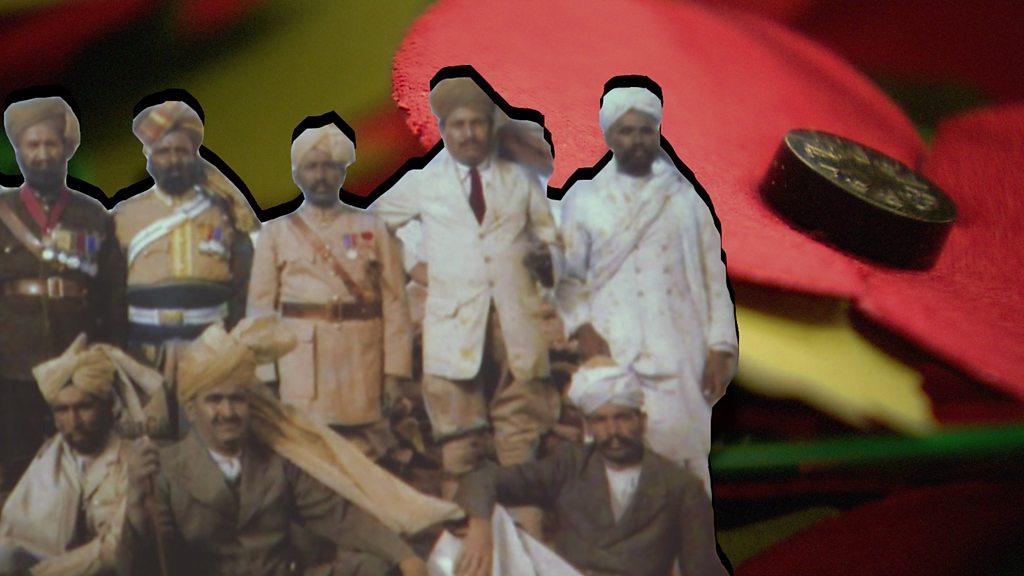
- Published7 November 2018
